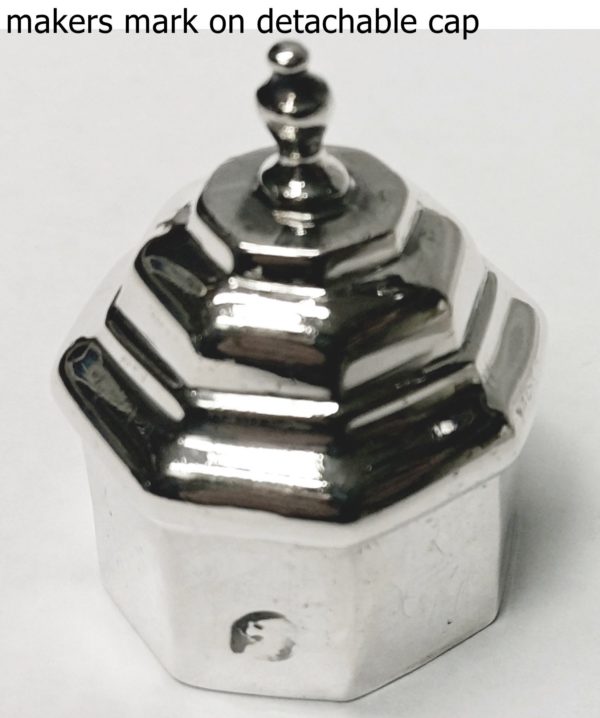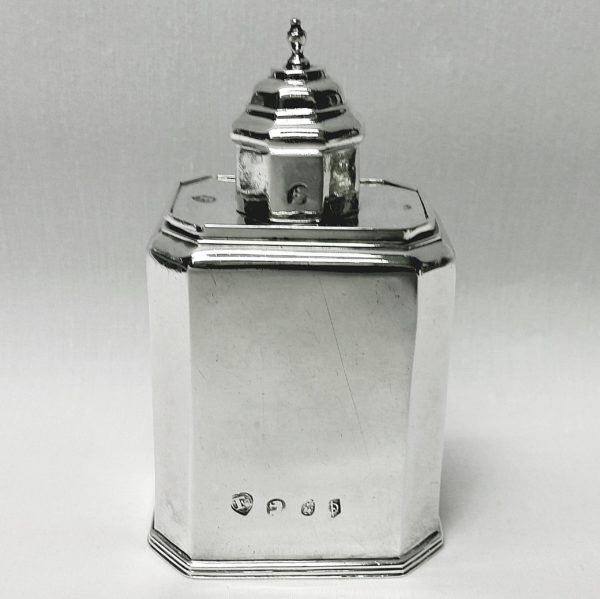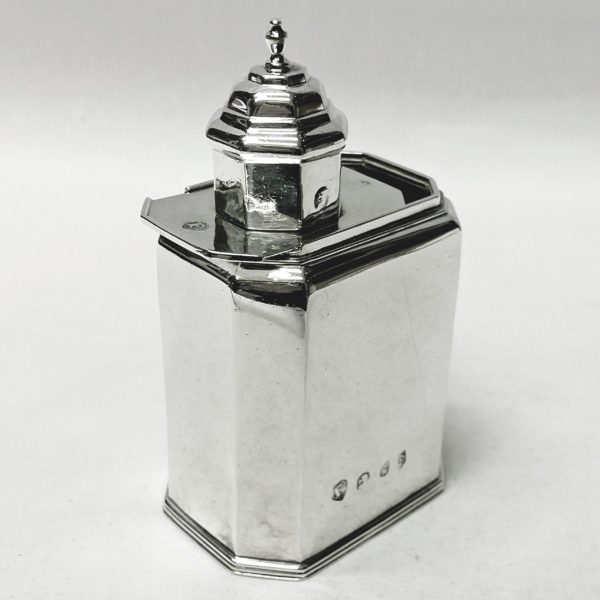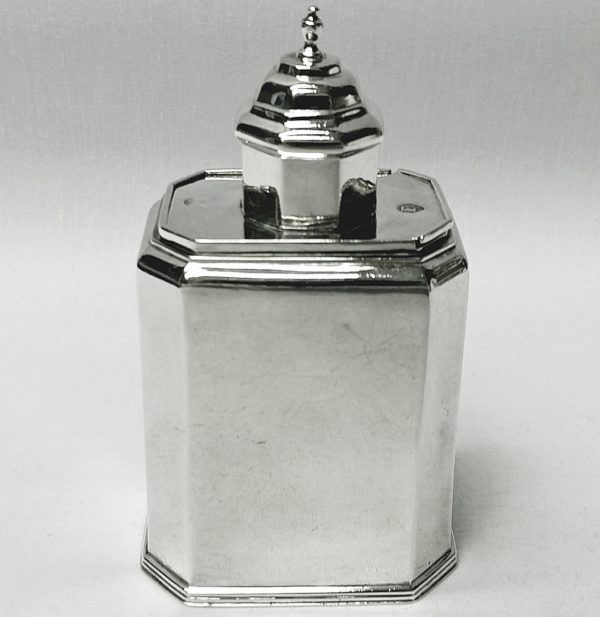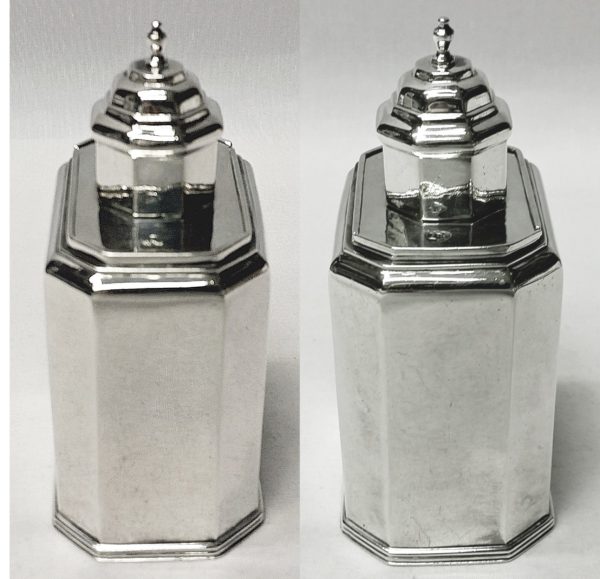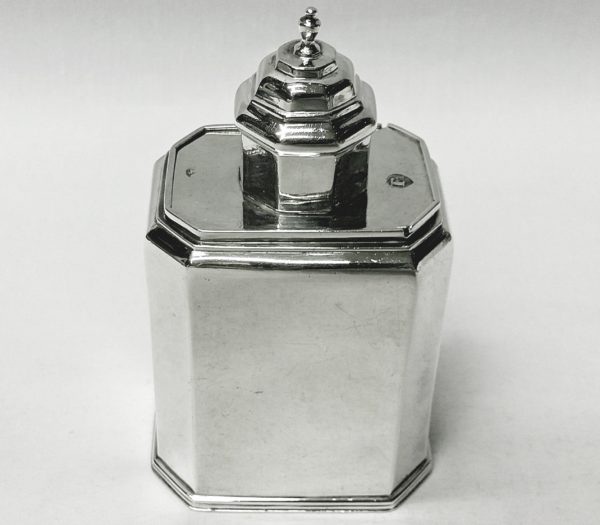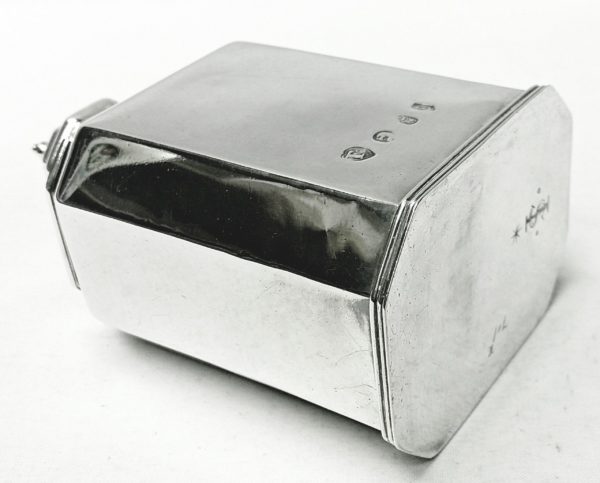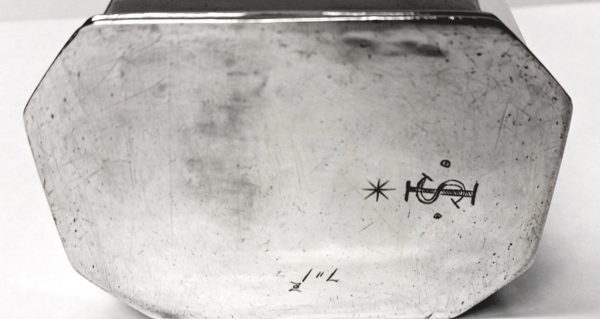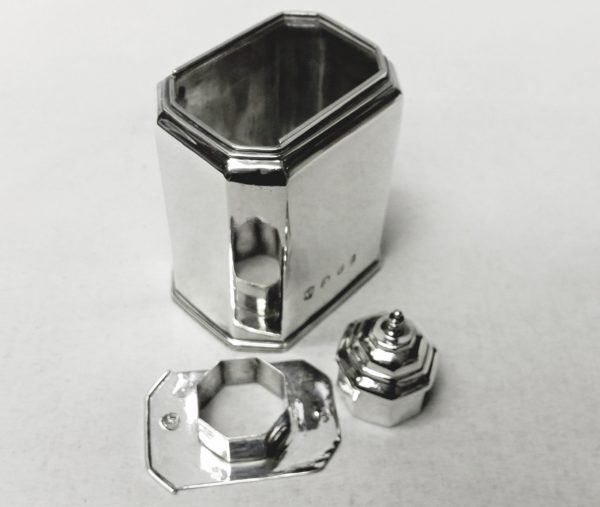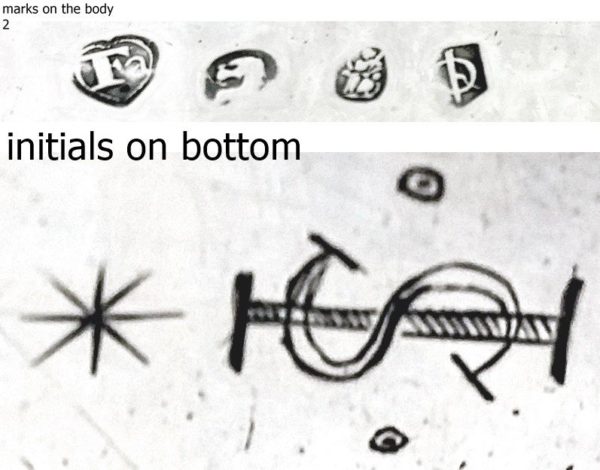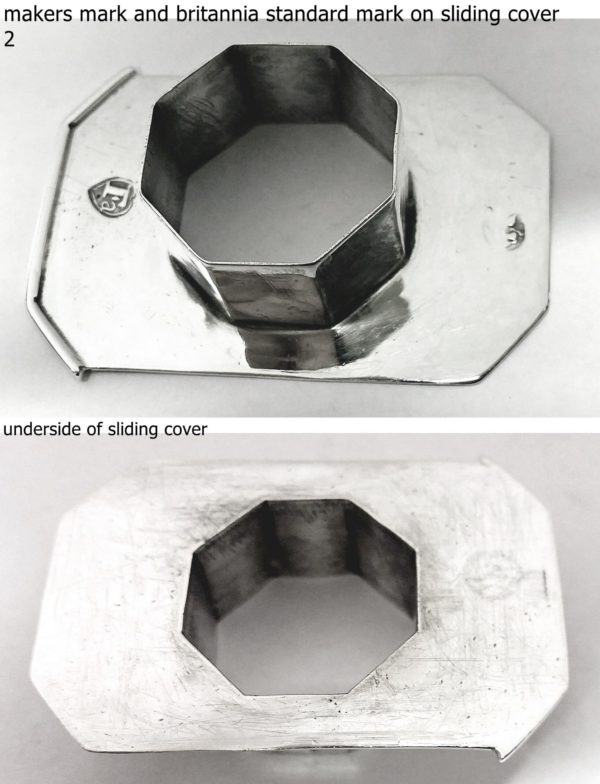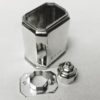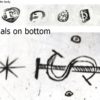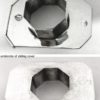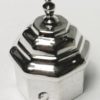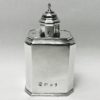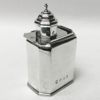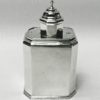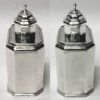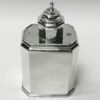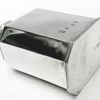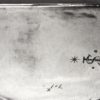Antique Queen Anne Silver Tea Caddy
SOLD
Stock: 8751
Date: 1711
Maker: John Farnell
Country: England
A good early English silver caddy of plain hexagonal design. With sliding top and lift off cap which doubles as...
Description
Condition
This lovely antique silver tea box is in very good condition with no damage or restoration. Good patina. All original and in good working order. The silver marks on the body are very clear and easy to read. The sliding top is marked with the Britannia and makers mark, the cap has the makers mark. Please note that this item is not new and will show moderate signs of wear commensurate with age. Reflections in the photograph may detract from the true representation of this item.
Maker Information
Maker: John Farnell
John Farnell, London silversmith, apprenticed to John Ash 1706, free 1714. Mark entered as largeworker 1714. 2nd mark (Sterling) 1720. Livery 1728. His mark is often found on hexagonal tea caddies.
Our Guarantee
Customer satisfaction is our primary concern
All silverware on our website is checked thoroughly prior to offering it for sale and every product listing contains a condition report and details of the silver hallmarks.
All items offered on our website include:
- Free Shipping Worldwide
- Tracked and Insured
- 14 day no quibble money back guarantee
- We are accredited members of LAPADA and conform to their strict professional standards
- We dispatch 1-3 days after receiving cleared payments
More detailed information about deliveries, returns and how to pay is available in the Help section at the bottom of this page.
